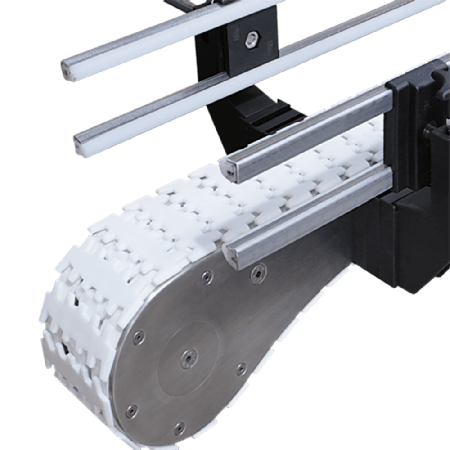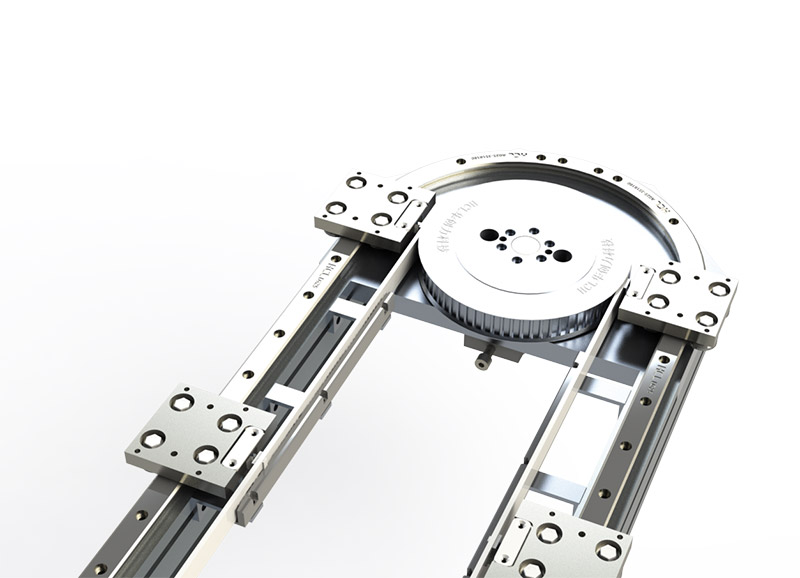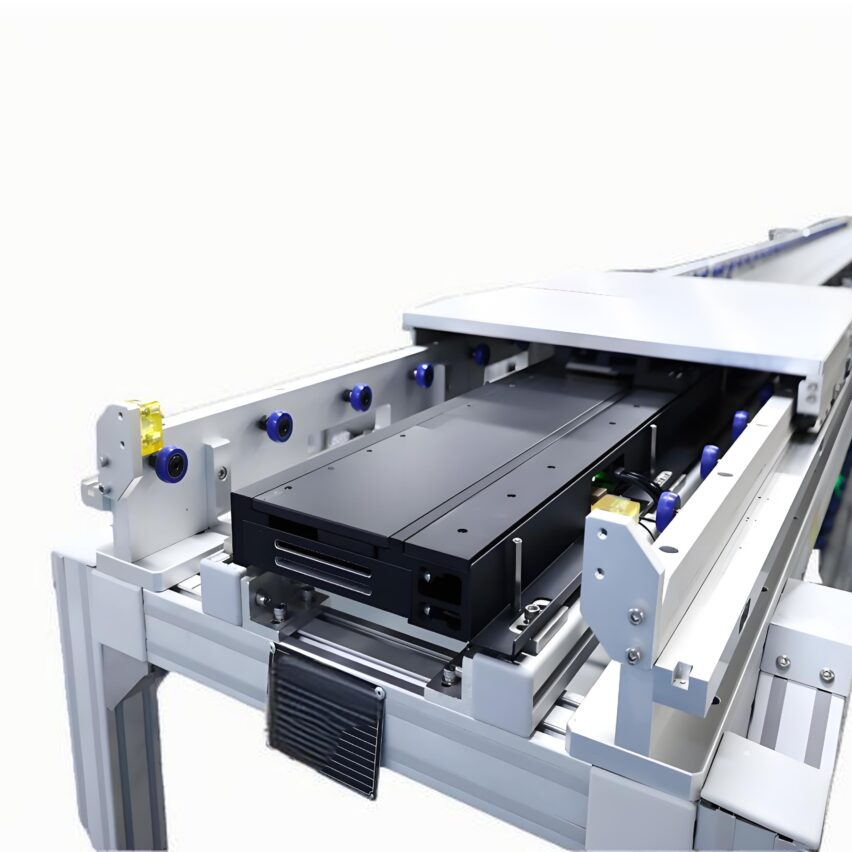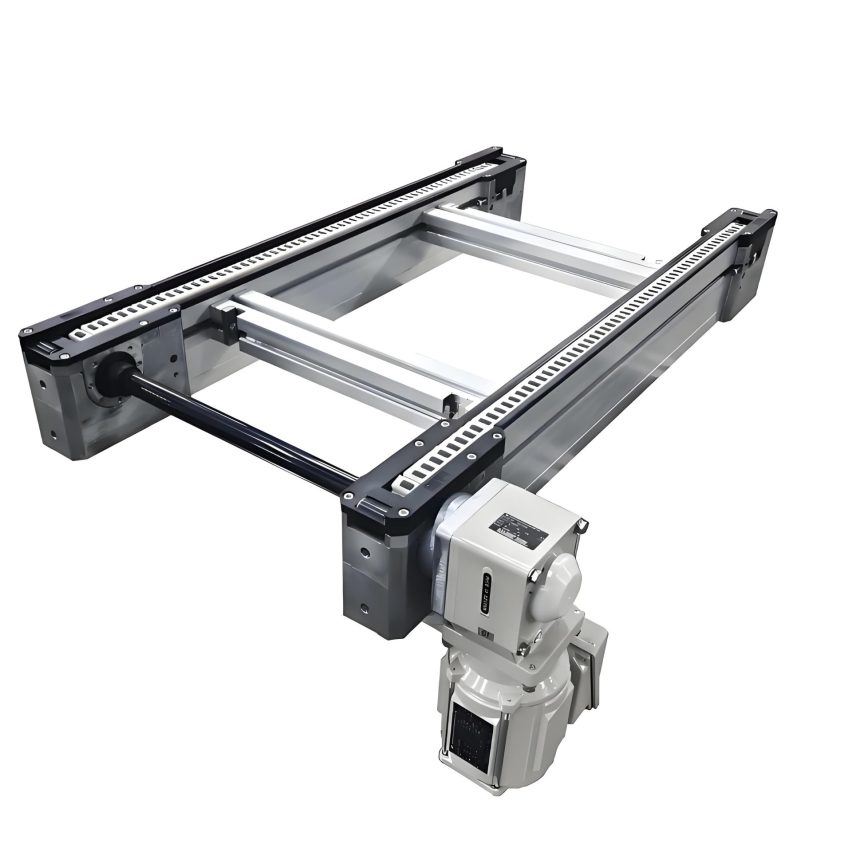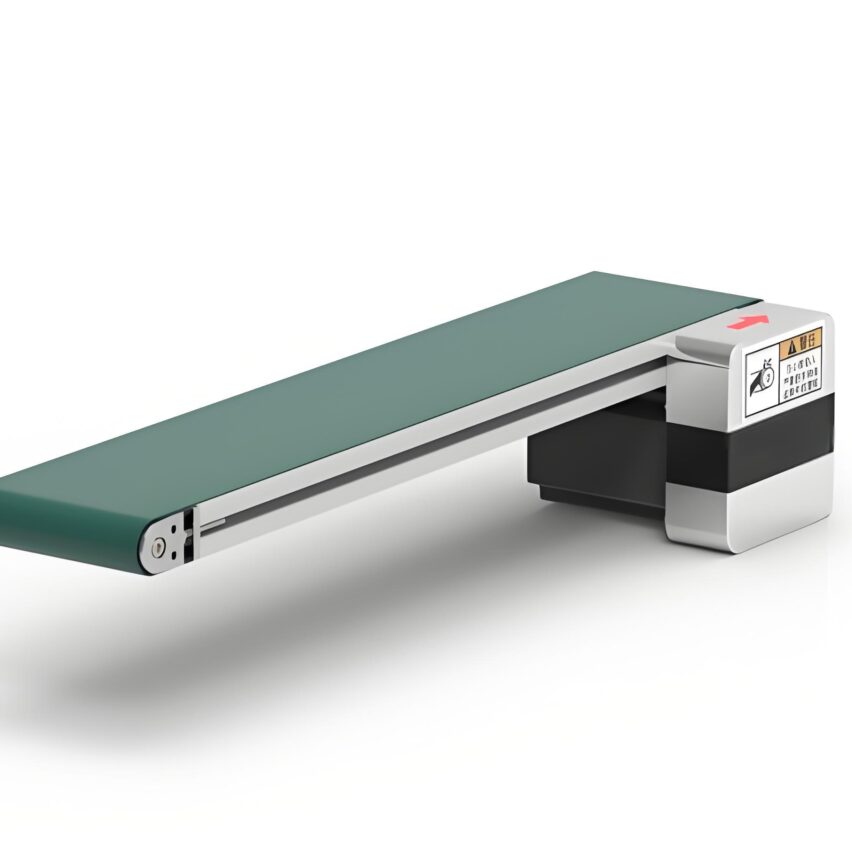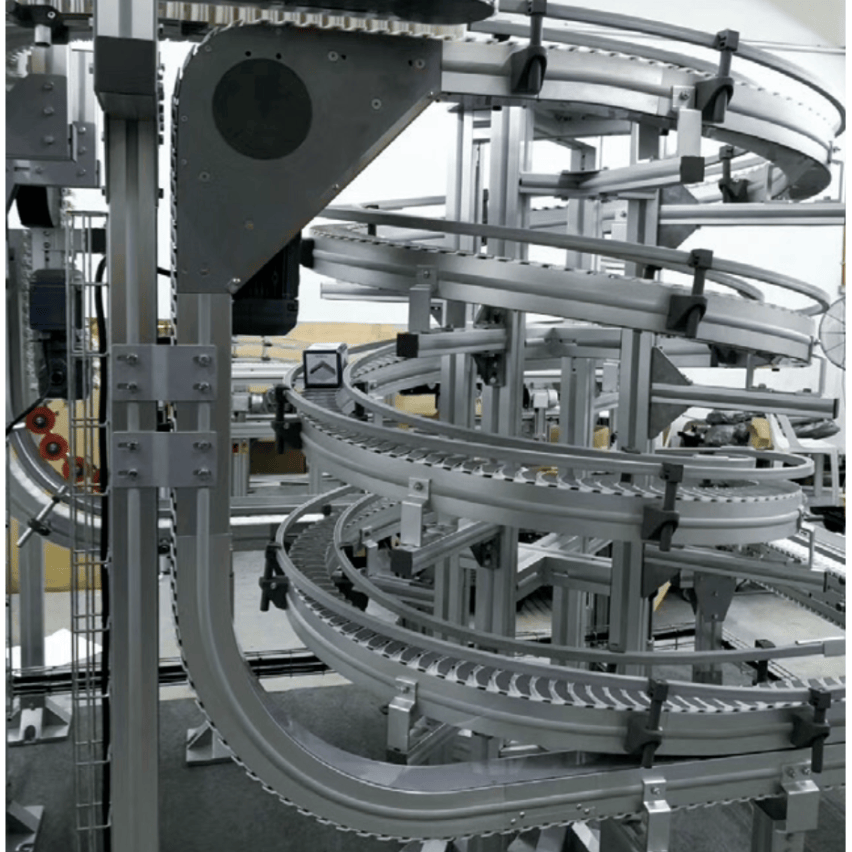## I. The nature of rebound: the game of inertial forces and system stiffness
The rebound of the work plate in the multiplier chain system is, essentiallyThe combined result of kinetic energy release and structural elastic deformation. When a pallet runs into a stopper at 2-3 times the chain speed (typically up to 18m/min), its kinetic energy E=1/2mv² is instantly converted into crushing potential energy. If the system is not stiff enough, the plate compresses the contacting parts and produces a rebound displacement of 0.5-3mm - which can mean catastrophic deviations for precision assembly lines.
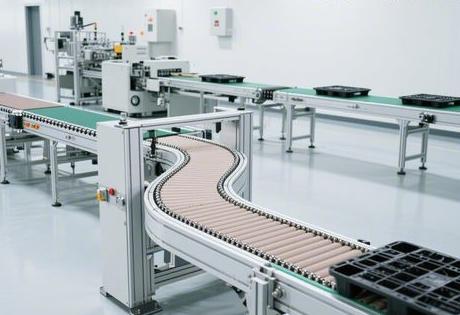
The deeper causal factors can be broken down into three areas:
- runaway inertial forceHeavy duty work plate (≥400kg) with an impact force of over 2000N during emergency stop, far exceeding the load limit of ordinary blockers;
- Contact surface creep: Engineering plastics rollers that deform plastically to the order of 0.1mm under repeated impacts, leading to friction self-locking failure;
- Vibration harmonic superposition: The polygonal effect of the sprocket wheel induces low-frequency vibrations of 5-15 Hz, which resonate with the intrinsic frequency of the equipment to amplify the rebound amplitude.
## II. Mechanical Anti-Rebound: Rigid and Flexible Physical Interception
### Ratchet-slash self-locking mechanism
The most reliable solutions available areBidirectional check assembly, whose core innovation is:
- Asymmetric toothed pawlThe 17° pressure angle serration design reduces contact stress by 60% compared to the traditional 45° tooth profile;
- Dual slope guided ramps: The 35° bevelling of the front section guides the smooth passage of the workpiece and the 60° bevelling of the rear section achieves a rigid locking (see Figure 1);
- Pre-compression spring energy storage systems: Spring stiffness coefficient k = 1.8N/mm ensures pawl reset in 0.1 seconds.
case-based evidenceAfter the application of a car battery pack production line, the positioning accuracy of the work plate was improved from ±1.2mm to ±0.05mm, and the failure rate of stopping the line decreased by 82%.
### Energy Consuming Buffer Module
for heavily loaded scenariosHydraulic-Hysteresis Composite Dampers::

- primary energy consumption: Silicone-based hydraulic fluid creates viscous drag through 0.2mm capillaries, absorbing the kinetic energy of the 70% impact;
- Secondary lockout: NdFeB permanent magnets generate a 1200Gs confining magnetic field, creating contactless braking.
Measured data shows that this combination zeroes the 15kg-m/s momentum workpiece over a 50mm stroke.
## III. Synergy between pneumatic and electronic control: a technological breakthrough in dynamic response
### Closed-loop air pressure control system
Conventional blocking cylinders are upgraded in the direction ofThree-stage pressure adaptation::
- Pre-deceleration section (300mm from blocking point): Triggered by the laser rangefinder, the cylinder is precharged to 0.2 MPa;
- Main brake section (50mm travel): Proportional valve pressurisation to 0.6MPa, travel time ≤ 0.3 sec;
- Micro-locking segment (when in place): Maintain 0.15MPa back pressure to eliminate system elastic deformation.
### Servo drive with real-time feedback
Linear Motor Direct Drive BlockerOpening New Paths:
- Adopt 500W AC servo motor, response time <10ms;
- Built-in magnetic scale achieves ±0.01mm positioning resolution;
- Peak thrust up to 1500N, supports 20 dynamic force adjustments per second.
Tests at a semiconductor plant in Suzhou show that the solution keeps the wafer carrier springback within 0.003mm and the breakage rate to zero.
## IV. Structural topology optimisation: from reactive defence to proactive prevention
### Rigidity Enhancement Design for Tooling Plate
pass (a bill or inspection etc)composite sandwich constructionBreaking the rebound logjam:
- surface layer: 2mm thick 6061-T6 aluminium alloy (yield strength 275MPa);
- core layer: Carbon fibre honeycomb panel (density 0.18g/cm³, shear modulus 1.8GPa);
- Anti-Rebound ComponentsRhombic pin + cylindrical pin combination, over positioning tolerance <0.02mm.
### Vibration-resistant modification of the body of the doubler chain
Variable Pitch Roller SetsEffective suppression of harmonic vibration:
- Main load bearing wheel pitch 38.1mm (standard value);
- The auxiliary wheel pitch of 41.7mm (+9.5%) disrupts the phase of the vibration frequency;
- Combined with polyurethane covered rollers, vibration acceleration is reduced by 12dB.
## V. Future evolution: integration of smart materials and predictive maintenance
### Fourth generation self-healing energy-consuming material
disclosed in the 2025 patentMicroencapsulated Silicon Fluids::
- The capsules have a wall thickness of 50 μm and contain dimethylsilicone oil with a viscosity of 10^5 cP;
- The capsule ruptures to release silicone oil when the impact stress is >1.5 MPa;
- Automatically fills microscopic defects on contact surfaces with a repair rate of over 90%.
### IoT-based prediction system
Vibration Spectrum AI Diagnostic PlatformThe practical value of the
- Deploy 3-axis accelerometers on the drive side with a sampling rate of 10kHz;
- Feature extraction: a sudden increase in energy values in the 200-800 Hz band 231 TP3T predicts rebound risk;
- Push out maintenance recommendations 72 hours in advance, with a failure intercept rate of 881 TP3T.
## Exclusive data: the economics of anti-rebound technology restructures the logic of the production line
2024 Automotive industry research shows production lines with intelligent anti-kickback systems:
- Integrated efficiency gains: Work station beats compressed from 120 seconds to 78 seconds (+35%) and buffer segment length reduced by 60%;
- Maintenance cost reversal: From an annual average of $280,000 to $90,000 and a 73% reduction in unplanned downtime;
- Precision Barrier BreakthroughEngine block tooling positioning fluctuation range ±0.1mm → ±0.03mm, assembly defective rate to zero.
(Note: Data derived from the 2025 Global White Paper on Intelligent Conveyor Systems core case base)
## Self-questioning: penetrating the essence of technology
Q: Why is the anti-kickback system still sought after by car companies even though it costs three times more than a regular stopper?
A: At the heart ofLife-cycle benefitsAlthough the unit price of ordinary blockers is only a few thousand yuan, the loss of line stoppage caused by rebound is up to 120,000 yuan/hour; while the intelligent anti-rebounding system through thezero-collision positioningThe OEE (Overall Equipment Effectiveness) of the production line has increased from 76% to 92%, and the investment can be recovered within half a year.
Q: Why do left and right doubler chains need more anti-kickback design than single-sided chains?
A.torque coupling effectis the main cause: when the synchronisation error of the left and right chains is >0.1mm, the workpiece is subjected to torsional loads (peak torque 18N-m), which induces a rotational type of kickback. It is necessary to useCross-axis linkage blockerThe control is achieved by a servo motor with μs-level synchronisation.
Q: How do I verify the anti-rebound system life?
A: need to passThird-order acceleration test::
- 200,000 cycles of 10kg light load impact (analogue electronic assembly);
- 50,000 times 400kg heavy load impact (automotive engine line condition);
- 200 hours of 5-50Hz variable frequency vibration (sprocket polygon effect simulation).




